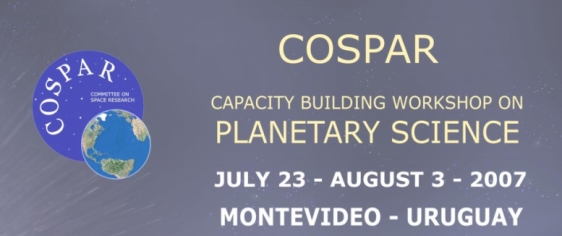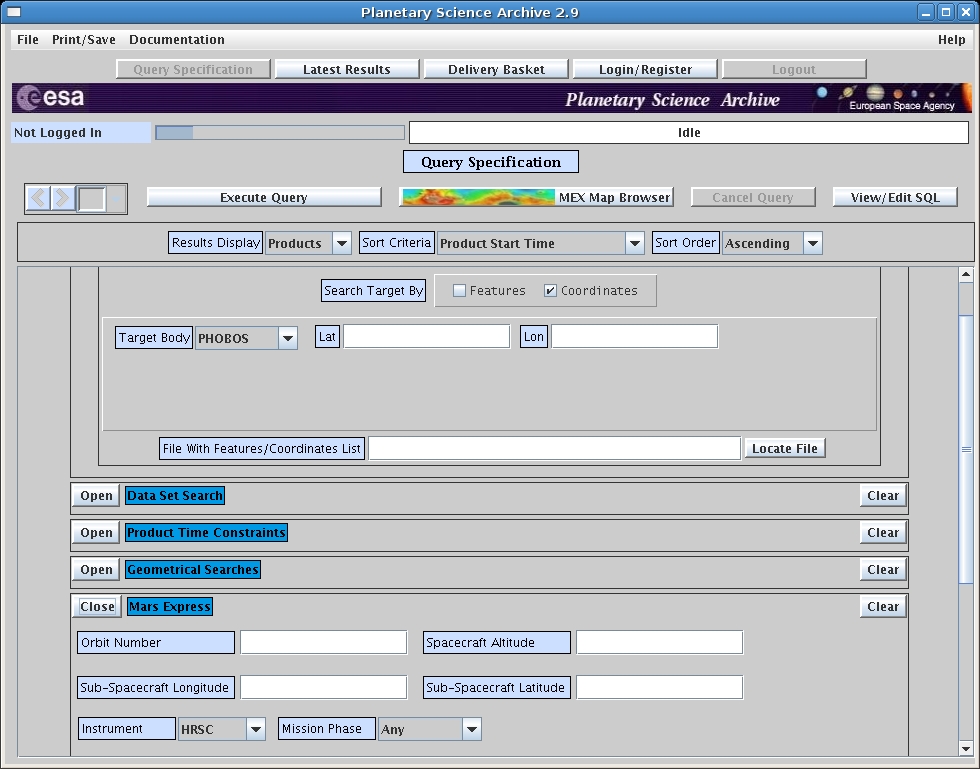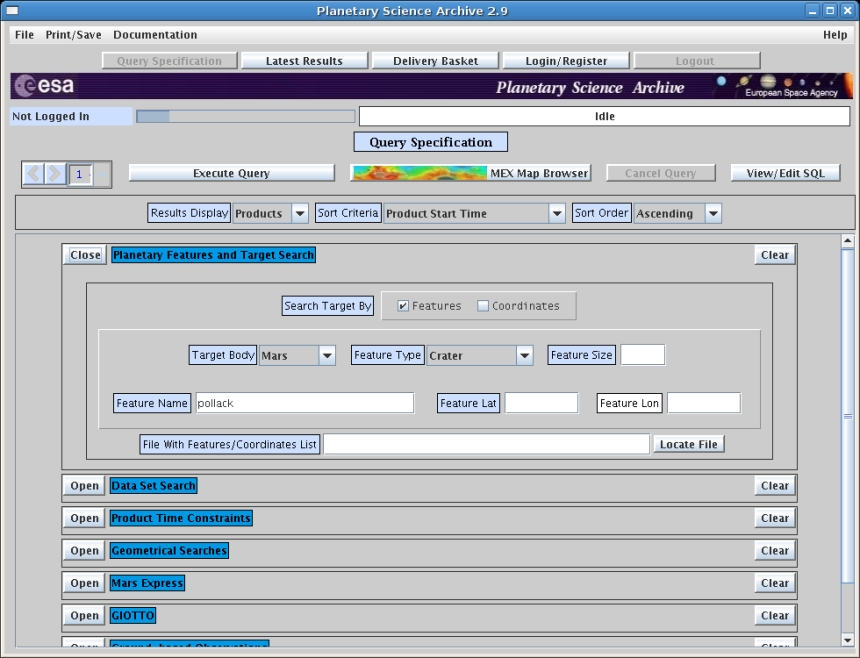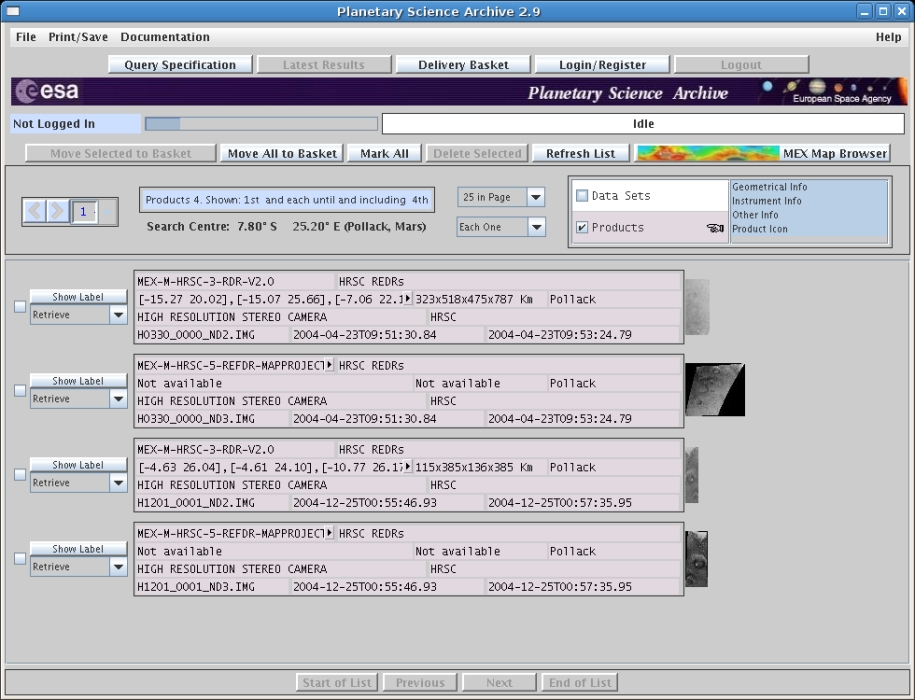
Hands-on session on the PSA. Solutions to the exercices.
Exercise 1
How many images are available on the PSA from Mars satellites?
Solution.
You can search first the images for Phobos, and then for Deimos:
- Open the Planetary Features and Target Search Panel.
- Select Search Target by Coordinates.
- Select Target Body PHOBOS.
- Open the Mars Express panel.
- Select the HRSC tab.
- Execute query.

Repeat the operation for Deimos.
Exercise 2
Use the PSA Classical User Interface to query the crater named Pollack for the nadir channel
of the HRSC instrumemt flown on Mars Express.
- Look at the quicklook image and download all related documentation related to this data product.
- Visualize the footprint of the resulting images on the PSA Map based User Interface.
- Determine the longitude and latitude boundaries of the resulting images.
- download the resulting products.
Solution.
- Open the Planetary Features and Target Search Panel.
- Select Target Body Mars, and Feature Type Crater.
- Go to the Mars Express Panel and select the HRSC tab.
- Select the HRSC_NADIR Detector ID.

Once the query has been executed:
- Click on the icon on the right to see the image.
- Click on the Retrieve menu on the right, and download all the documentation.
- Click on the Mex Map Browser to see the footprints on the
Mars surface.
- Click on Advanced Search to go back to the classical view. Select the check-boxes
for all the products.
- Click on the Delivery Basket panel, to see the shopping basket.
- Click on Submit Request to download the products.

Exercise 3
Use the PSA Classical User Interface to query OMEGA and HRSC data for the volcano Olympus Mons.
- How many data products are returned for OMEGA and how many for HRSC?
Solution.
- Open the Planetary Features and Target Search Panel.
- Select Mons in Feature type.
- Type Olympus Mons in Feature Name PHOBOS.
- Open the Mars Express panel.
- Select the HRSC tab.
- Execute query.
- Repeat the operation for OMEGA.
Exercise 4
Use the PSA Dataset Browser Interface to download the OMEGA Catalog directory.
- Understand the directory and file naming convention.
- What kind of information can be found there?
- Where is located the information about the data in the dataset?
- What's the difference between MISSION.CAT and INSTHOST.CAT?
Solution.
- Open the Dataset Browser interface.
- Select OMEGA.
- The entry point for the catalogs in the dataset is VOLDESC.CAT, in the
top level directory. Find the corresponding catalog for the data.
- Have a look at MISSION.CAT and INSTHOST.CAT and try to find the difference.
Exercise 5
Use the PSA Dataset Browser to understand the SPICAM instrument onboard Mars Express.
What kind of an instrument is it?
Solution.
- Open the Dataset Browser interface.
- Select SPICAM.
- Find the instrument catalog and read it.




